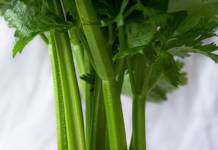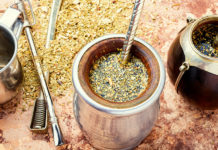If you grab a can of lime flavored seltzer, you may notice that it proudly advertises that it’s made with natural flavors. I’ll bet that this makes you feel pretty good about drinking it. It’s natural, so therefore it must be a healthy drink–or at least better than a name brand diet cola. But look a bit further and you’ll notice that lots of foods–from Jelly Belly to Chips Ahoy–list natural flavors among their ingredients. This includes things you know are definitely not healthy. So what does the term “natural flavors” mean?
The FDA’s Definition of Natural Flavor
The FDA defines natural flavor or flavoring as, “the essential oil, oleoresin, essence or extractive, protein hydrolysate, distillate, or any product of roasting, heating or enzymolysis, which contains the flavoring constituents derived from a spice, fruit or fruit juice, vegetable or vegetable juice, edible yeast, herb, bark, bud, root, leaf or similar plant material, meat, seafood, poultry, eggs, dairy products, or fermentation products thereof, whose significant function in food is flavoring rather than nutritional.”
Got all that?
Basically, as long as the flavor’s original source is a living thing, the end result meets the definition of natural. Manufacturers may have put the flavoring or the final product through extensive processing, but as long as it started out natural, it’s natural.
Many naturally occurring substances can create a flavor we associate with a plant, like the lime flavor we mentioned above. It doesn’t have to come from lime. Scientists create chemical compounds that mimic a taste. They may source those from any number of “natural” things.
What the Label Doesn’t Say
Notice that animal products feature into the FDA’s definition. So vegans, beware. You don’t know whether the source of a natural flavor is plant or animal. The generic moniker “natural flavors” may also mask allergens beyond those that have to be displayed on a label (milk, soy, tree nuts, etc.) Those with allergies to eggs, certain fruits, or other less common items should exercise caution.
Natural vs. Artificial Flavor
There’s a fine line between natural and artificial flavoring. Both are made in a lab. A writer for Healthyish, interviewing experts at The Museum of Food and Drink, says that “natural and artificial flavors aren’t that different from each other, at least not chemically.” The difference is that artificial flavors start from inedible sources like petroleum.
The Cost of Flavor Extraction
Food companies employ armies of “flavorists” to figure out how to mimic flavors. That’s why they don’t need a lime to make naturally flavored lime seltzer. The main reason to seek alternate sources is cost.
Nootkatone is a naturally occurring chemical compound in grapefruit. When extracted from a grapefruit this compound can be used to produce a grapefruit flavoring. The fruit only produces only a small amount of nootkatone, making direct extraction highly inefficient. Scientists found a way to synthesize this process by feeding sugar to a yeast bacteria called Pichia pastoris. Extracting the compound from the bacteria’s excretions creates an artificial flavoring. Yum.
Extracting flavors straight from the source is not always the most economical process. To keep prices low some companies have found some pretty interesting ways to obtain the natural flavors you love.
Don’t believe everything you read, thought. Claims that artificial vanilla flavoring often comes from a beaver’s anal glands have been largely debunked, as Snopes explains. (The secretion in question is, however, used in perfume.)
Natural Doesn’t Mean Nutritious
Understanding food labels poses a number of challenges. Stay mindful and understand what you are consuming, as much as you can. Touting natural flavoring is predominantly a marketing tool. To find out if the food you’re considering is actually nutritious ignore the jargon and look at the ingredients and nutrition facts.
The next time you pick up a box of strawberry breakfast bars don’t rely on the labels Natural Flavoring, Non-GMO, and Organic. These labels don’t tell you what is actually in your food. The best way to ensure that you’re eating healthy and nutritious meals is to do some research and look at the facts. Better yet, avoid packaged foods altogether and cook at home.








